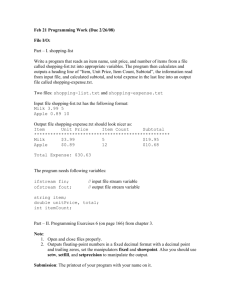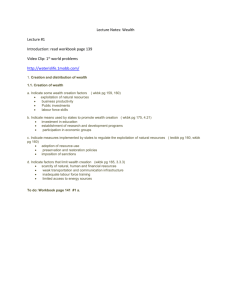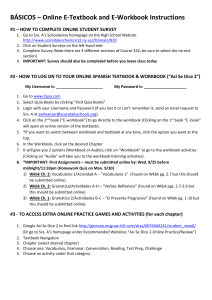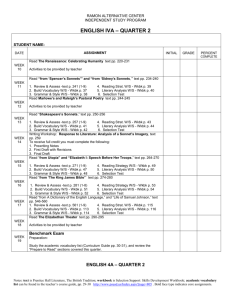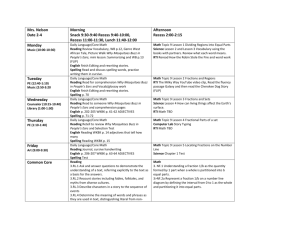Grade 10 Applied Mathematics - Toronto District School Board
advertisement
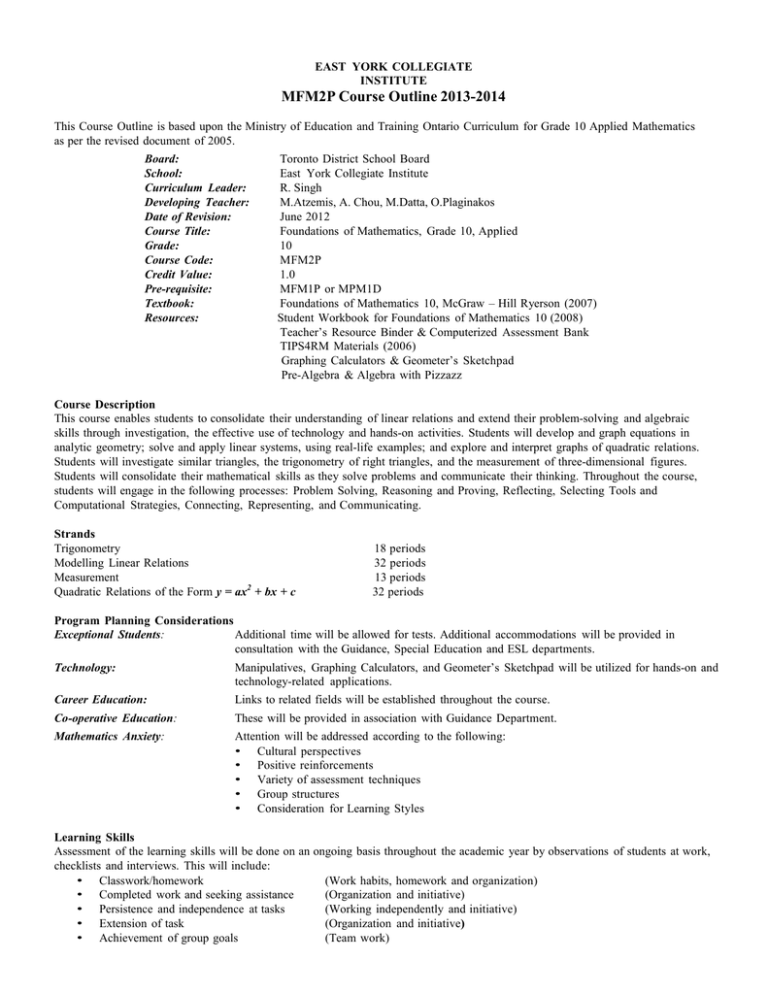
EAST YORK COLLEGIATE INSTITUTE MFM2P Course Outline 2013-2014 This Course Outline is based upon the Ministry of Education and Training Ontario Curriculum for Grade 10 Applied Mathematics as per the revised document of 2005. Board: School: Curriculum Leader: Developing Teacher: Date of Revision: Course Title: Grade: Course Code: Credit Value: Pre-requisite: Textbook: Resources: Toronto District School Board East York Collegiate Institute R. Singh M.Atzemis, A. Chou, M.Datta, O.Plaginakos June 2012 Foundations of Mathematics, Grade 10, Applied 10 MFM2P 1.0 MFM1P or MPM1D Foundations of Mathematics 10, McGraw – Hill Ryerson (2007) Student Workbook for Foundations of Mathematics 10 (2008) Teacher’s Resource Binder & Computerized Assessment Bank TIPS4RM Materials (2006) Graphing Calculators & Geometer’s Sketchpad Pre-Algebra & Algebra with Pizzazz Course Description This course enables students to consolidate their understanding of linear relations and extend their problem-solving and algebraic skills through investigation, the effective use of technology and hands-on activities. Students will develop and graph equations in analytic geometry; solve and apply linear systems, using real-life examples; and explore and interpret graphs of quadratic relations. Students will investigate similar triangles, the trigonometry of right triangles, and the measurement of three-dimensional figures. Students will consolidate their mathematical skills as they solve problems and communicate their thinking. Throughout the course, students will engage in the following processes: Problem Solving, Reasoning and Proving, Reflecting, Selecting Tools and Computational Strategies, Connecting, Representing, and Communicating. Strands Trigonometry Modelling Linear Relations Measurement Quadratic Relations of the Form y = ax2 + bx + c 18 periods 32 periods 13 periods 32 periods Program Planning Considerations Exceptional Students: Additional time will be allowed for tests. Additional accommodations will be provided in consultation with the Guidance, Special Education and ESL departments. Technology: Manipulatives, Graphing Calculators, and Geometer’s Sketchpad will be utilized for hands-on and technology-related applications. Career Education: Links to related fields will be established throughout the course. Co-operative Education: These will be provided in association with Guidance Department. Mathematics Anxiety: Attention will be addressed according to the following: • Cultural perspectives • Positive reinforcements • Variety of assessment techniques • Group structures • Consideration for Learning Styles Learning Skills Assessment of the learning skills will be done on an ongoing basis throughout the academic year by observations of students at work, checklists and interviews. This will include: • Classwork/homework (Work habits, homework and organization) • Completed work and seeking assistance (Organization and initiative) • Persistence and independence at tasks (Working independently and initiative) • Extension of task (Organization and initiative) • Achievement of group goals (Team work) Assessment Strategies A variety of teaching/assessment strategies to address students’ needs will be used during the school year. Formative assessments will be ongoing through out the academic year. These may include: • Diagnostic assessment • Formative assessment • Performance assessment • Portfolio assessment • Rubrics • Checklists Term Summative Evaluations (70% Term Work) • Tests, quizzes, tasks and other forms of term summative evaluations will occur throughout the academic year at the end of units of work as outlined in the accompanying course outline. • Students will be provided with reasonable opportunities to master skills relating to the achievement of the curriculum expectations before assessment and evaluation occurs. • Major evaluations will be announced at least one week in advance. • Accommodations will be made for school activities, statutory holidays, religious days, cultural days, sports events and other occurrences that may impact on any scheduled evaluation. It is the student’s responsibility to notify teachers of such absences in advance and to make up missed work. • Absence on the day of an evaluation must be documented. If a student must miss an evaluation, s/he is expected to: a) see the teacher before the absence to arrange for an alternative date to make up the evaluation; or b) in case of illness or unexpected absence, present a note to the teacher, signed by a parent or guardian, immediately upon their return to explain the absence. An alternate evaluation will then be scheduled at a mutually convenient time. • The East York Late Policy applies to all assignments and evaluations. See your Agenda book. • Cheating will not be tolerated in any form and will be dealt with appropriately. Final Mark Calculation Calculation of the Term Mark will be based upon the Categories of the Achievement Chart. This chart is meant to assist teachers in planning instruction and learning activities for the achievement of the curriculum expectations. It is also used in designing assessment and evaluation tools and in providing feedback to students. Each mathematical topic will contain each category in the chart due to the integrated nature of the discipline in mathematics. Final marks will be calculated as follows: Term Work: 70% Levels of Achievement: Knowledge and Understanding: 35% Level 1: 50 - 59% Application: 14% Level 2: 60 – 69% Thinking and Inquiry: 14% Level 3: 70 – 79% Communication: 7% Level 4: 80 - 100% Final Summative Evaluations: 10% culminating 20 % final exam Communication Access to extra help and mark records. Students are encouraged to consult their teachers on a regular basis for extra help and guidance as it relates to improving their academic performance. Students are also expected to discuss strategies for improving their grades with their teachers. Students are expected to view their report cards as an indication of their current achievement and discuss with teachers for clarification. Communication with Parents/Guardians. Comments pertaining to academic achievement and learning skills are placed on the report cards are primarily to provide feedback for parents/guardians as well as students. Parent/guardian nights can be used for one to one discussion. At times it may be necessary to contact parents/guardians by telephone to discuss a student’s performance. Parents/guardians are also encouraged to contact teachers as and when the need arises. EAST YORK COLLEGIATE INSTITUTE MFM2P Daily Course Outline 2012-2013 Textbooks: Foundations of Mathematics 10, McGraw – Hill Ryerson (2007) Student Workbook for Foundations of Mathematics 10 (2008) Strand #1: Trigonometry (18 periods) Overall Expectations: • To use prior knowledge of ratio and proportion to investigate similar triangles and solve problems related to similarity; • To solve problems involving right triangles, using the primary trigonometric ratios and the Pythagorean Theorem. Per # TOPIC Section UNIT #1: SIMILAR TRIANGLES (6 periods) 1&2 Similar Triangles 1.3 3&4 Solve Problems Using Similar Triangles 1.4 5 Review 6 Test and/or Performance Task UNIT #2: RIGHT ANGLE TRIGONOMETRY (12 periods) 1 Get Ready 2 Pythagorean Theorem 2.1 3&4 Explore Ratio & Proportion in Right Triangles 2.2 5&6 Sine & Cosine Ratios 2.3 7&8 Tangent Ratio 2.4 9 & 10 Solve Problems Using Right Triangles 2.5 11 Review 12 Test and/or Performance Task ASSIGNMENT ** See TIPS4RM – Unit #1 ** Investigation: p. 19-21 Txt: p. 25, #1-16 Wkbk: p. 8-10 Txt: p. 33, #1-15 Wkbk: p. 11-13 Txt: p. 39-41 Wkbk: p. 15 Txt: p. 44-45 Wkbk: p. 16 Txt: p. 49, #1-15 Wkbk: p. 18-19 Investigation: p. 54-57 Txt: p. 59, #1-11 Wkbk: p. 21-22 Investigation: p. 63-67 Txt: p. 71, #1-18 Wkbk: p. 24-25 Investigation: p. 74-77 Txt: p. 79, #1-14 Wkbk: p. 27-28 Txt: p. 86, #1-11 Wkbk: p. 29-31 Txt: p. 90-91 Wkbk: p. 32-33 Comment New topic Computer lab needed for GSP. Review of 1P New topic Computer Lab needed for GSP Investigations New topic Computer Lab needed for GSP Investigations New topic Computer Lab needed for GSP Investigations Strand #2: Modelling Linear Relations (32 periods) Overall Expectations: • To manipulate and solve algebraic equations, as needed, to solve problems; • To graph a line and write the equation of a line from given information; • To solve systems of two linear equations, and solve related problems that arise from realistic situations. Per # TOPIC Section UNIT #3: LINEAR RELATIONS (14 periods) 1 Get Ready 2&3 Slope as a Rate of Change 3.1 4 Investigate y=mx+b using Technology 3.2 5&6 Properties of Slopes of Lines 3.3 7 Review 8a 98b, 9 Test Determine the Equation of a Line 3.4 ASSIGNMENT Txt: p. 98-99 Wkbk: p. 34 Investigation: p. 100-101 Txt: p. 106, #1-15 Wkbk: p. 35-37 Investigation: p. 111-112 Txt: p. 115, #1-10 Wkbk: p. 38-40 Investigation: p. 118-122 Txt: p. 124, #1-15 Wkbk: p. 41-43 Txt: p. 146, #2-7 Wkbk: p. 137-138 Investigation: p. 128-129 Comment Review for 1P students. [1P vocabulary was “initial value” and “rate of change”] Graphing calculators needed. NEW for 1P students. Topic done with applications ONLY. Graphing calculators needed. NEW for 1P students. NEW for 1P students. & 10 11 & 12 Graph Linear Relations by Hand 13 Review 14 Test and/or Performance Task 3.5 UNIT #4: LINEAR EQUATIONS (9 periods) 1 Get Ready 2 Solve One- and Two-Step Linear Equations 4.1 3&4 Solve Multi-Step Linear Equations 4.2 5&6 Model with Formulas 4.3 7 4.4 8 Convert Linear Equations from Standard Form Review 9 Test and/or Performance Task UNIT #5: LINEAR SYSTEMS (9 periods) 1 Solving Linear Systems by Graphing 5.1 2&3 Solve Linear Systems by Substitution 5.2 4&5 Solve Linear Systems by Elimination 5.3 6&7 Solving Problems Involving Linear Systems 5.4 8 Review 9 Test and/or Performance Task 1&2 3 Cumulative Review CUMULATIVE TEST #1 (Units #1-5) Txt: p. 133, #1-11 Wkbk: p. 44-46 Txt: p. 143, #1-10 Wkbk: p. 47-49 Txt: p. 147, #8-13 & p. 148-149 Wkbk: p. 50-51 Line Design Project Txt: p. 152-153 Wkbk: p. 52 Txt: p. 159, #1-19 Wkbk: p. 53-55 Txt: p. 169, #1-14 Wkbk: p. 56-58 Txt: p. 180, #1-15 Wkbk: p. 59-61 Txt: p. 187, #1-11 Wkbk: p. 63-64 Txt: p. 190-193 Wkbk: p. 65-66 Txt: p. 201, #1-13 Wkbk: p. 68-70 Txt: p. 209, #1-14 Wkbk: p. 72-73 Txt: p. 216, #1-9 Wkbk: p. 75-76 Txt: p. 223, #1-10 Wkbk: p. 78-79 Txt: p. 226-229 Wkbk: p. 80-81 Graphing calculators needed. Review for 1P. Only fractional equations are new. New topic for 1P. Review for 1P Graphing calculators needed New topic for 1P and 1D. New topic for 1P and 1D. Txt: pp. 232-233 Strand #3: Measurement (13 periods) Overall Expectations: • To solve problems involving surface areas and volumes of three-dimensional figures, and use the imperial and metric systems of measurement. Per # TOPIC Section UNIT #3: MEASUREMENT (13 periods) 1 Get Ready 2&3 Imperial Measure 1.1 4&5 1.2 7 Conversions between Metric & Imperial Systems QUIZ Volumes of Prisms & Pyramids Surface Area of Prisms & Pyramids 8 Surface Area & Volume of Cylinders 9.3 9 Volume of Cones & Spheres 9.4 10 & 11 9.5 12 Solving Problems Involving Surface Area & Volume Review 13 Test and/or Performance Task 6 9.1 9.2 ASSIGNMENT Comment ** Use EQAO academic formula sheet ** Txt: p. 4, #1-4 Txt: p. 9, #1-9 New topic Wkbk: p. 3-4 Txt: p. 16, #1-8 Wkbk: p. 5-7 Txt: p. 367, #1-11 Volume – review for 1P Models available for this unit. Wkbk: p. 131-132 Txt: p. 376, #1-15 Surface area – NEW for 1P Wkbk: p. 134-135 Txt: p. 386, #1-15 Wkbk: p. 137-138 Txt; p. 394, #1-12 Wkbk: p. 140-141 Txt: p. 402, #1-10 Wkbk: p. 143-144 Txt: p. 406-409 Wkbk: p. 145-146 Strand #4: Quadratic Relations in the Form y=ax2+bx+c (32 periods) Overall Expectations: • To manipulate algebraic expressions, as needed, to understand quadratic relations; • To understand characteristics of quadratic relations; • To solve problems by interpreting graphs of quadratic relations. Per # TOPIC Section UNIT #7: QUADRATIC RELATIONS (10 periods) 1&2 Explore Non-Linear Relations 6.1 3&4 Model Quadratic Relations 6.2 5&6 Key Features of Quadratic Relations 6.3 7&8 Rates of Change in Quadratic Relations 6.4 9 Review 10 Test and/or Performance Task UNIT #8: QUADRATIC EXPRESSIONS (10 periods) 1 Get Ready 2&3 Multiply Two Binomials 7.1 4&5 Common Factoring 7.2 6 Difference of Squares 7.3 7&8 Factoring x2+bx+c 7.4 9 Review 10 Test and/or Performance Task UNIT #9: REPRESENT QUADRATIC RELATIONS (12 periods) 1 Get Ready 2&3 Interpret Quadratic Relations 8.1 4&5 Represent Quadratic Relations in Different Ways 8.2 6&7 Quadratic Relations y=ax2+c 8.3 8, 9 & 10 Solve Problems Involving Quadratic Relations 8.4 11 Review 12 Test and/or Performance Task 1, 2 & 3 January/june Summative Review (Units #1-9) 1, 2 & 3 ASSIGNMENT Comment ** See TIPS4RM – Unit #4 ** Investigation: p. 238 New topic. Txt: p. 241, #1-9 Graphing calculators needed Wkbk: p. 83-85 daily for this unit. Investigation: p. 245-248 Txt: p. 249, #1-8 Wkbk: p. 87-88 Investigation: p. 254-256 Txt: p. 260, #1-7 Wkbk: p. 89-91 Investigation: p. 264-268 Txt: p. 269, #1-8 Wkbk: p. 92-94 Txt: p. 272-275 Wkbk: p. 95-96 ** See TIPS4RM – Unit #7 ** Txt: p. 278-279 Wkbk: p. 97 Txt: p. 286, #1-10 New topics Wkbk: p. 99-100 Txt: p. 294, #1-8 Wkbk: p101-103 Txt: p. 302, #1-8 Wkbk: p. 104-106 Txt: p. 309, #1-10 Wkbk: p. 107-109 Txt: p. 312-315 Wkbk: p. 110-111 ** See TIPS4RM – Unit #7 ** Txt: p. 318-319 Wkbk: p. 112 Investigation: p. 320-322 New topic Txt: p. 323, #1-13 Graphing calculators needed Wkbk: p. 112-115 daily for this unit. Investigation: p. 329-332 Txt: p. 333, #1-13 Wkbk: p. 116-118 Investigation: p. 336-340 Txt: p. 341, #1-13 Wkbk: p. 119-121 Investigation: p. 344-346 Txt: p. 347, #1-12 Wkbk: p. 122-124 Txt: p 352-355 Wkbk: p. 125-128 Txt: pp. 358-359 pp. 412-415 JANUARY/JUNE SUMMATIVE EVALUATIONS & PERFORMANCE TASKS (30% of Final Mark)

